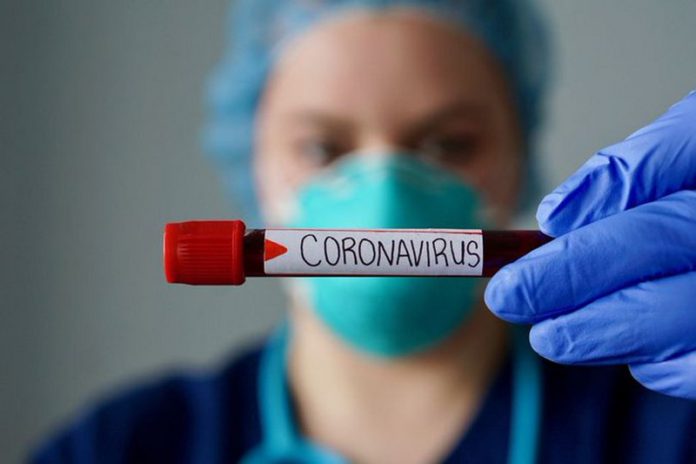
Ghana has revised its policy for the discharge of Covid-19 patients as part of measures to reduce ‘rising cost in testing’ and ‘increasing workload’.
According to a statement, a set of proposals have been tabled to, among other things, de-isolate asymptomatic cases 14 days after an initial positive test.
For symptomatic cases, de-isolation is scheduled to take place 14 days after onset of symptoms plus at least 3 days without symptoms.
This, the experts believe will also help ease pressure on the health facilities.
In a briefing at the Information Ministry June 18, Director-General of the Ghana Health Service (GHS), Dr Patrick Aboagye stated that the initial WHO-recommended testing had its own associated challenges necessitating the need to look out for alternatives.
“Initially, because the numbers were few, this was an adequate policy but with an increased number of cases, it brought to the fore some challenges.”
Individuals had a minimum of three tests and according to the GHS, and the average time for testing negative twice was 14 days based on a sample of 146 cases.
Dr. Aboagye however noted that because persons infected without exhibiting symptoms “don’t pose any threat, you may now do your negative test at home and then come for review.”
These new developments are based on recent data and a new clinical management guide by the World Health Organisation on the modification of discharge criteria.
Read full statement below:
POSITION STATEMENT ON DE-ISOLATION OR DISCHARGE FROM COVID-19 PATHWAY, JUNE 2020, GHANA
Ghana’s current position on discharge of confirmed COVID-19 cases was based on the Interim WHO guideline published in March 2020, which placed premium on the test- based strategy for discontinuing transmission-based precautions thus a patient was discharged after obtaining 2 negative PCR tests at least 24 hours apart.
This strategy initially was adequate, however with the increase in the number of cases, which currently more than 10,000, it has brought to the fore some challenges namely:
- Rising cost in testing, based on the current strategy before any patient is discharged, the individual on the average must undergo 3 different PCR tests.
- Increasing workload with associated delay in transmission of results has led to the clogging of isolation and treatment centers with patients who are healthy and only waiting for lab results. This has resulted in rising maintenance costs with respect to feeding.
- The increasing numbers of healthy patients being kept in these centers have led to these patients agitating to be discharged from the centers, leading to many unpleasant scenes across the country.
Judging from the above there is a need to re- think our strategy since the status quo is untenable.
COVID-19 disease characteristics has been evolving rapidly. New data from other studies have led to new insights to the management of this disease. New evidence on viral shedding and clinical presentations have led to the revision of many guidelines from several countries.
The WHO on the 27th of May 2020, released a new Clinical management guide 2 modifying the discharge criteria. The revised WHO discharge criteria combines both the time based and symptom based strategies. Specifically, for cases exhibiting symptoms discharge after a period of time of being symptom free and for those not showing any symptoms, a period of time after initial test was done.
The new recommendation from WHO:
Discontinue transmission-based precautions (DE-ISOLATE) and release from the COVID-19 care pathway as follows:
• For symptomatic patients: 10 days after symptom onset, plus at least 3 days without symptoms (without fever and respiratory symptoms).
• For asymptomatic patients: 10 days after initial positive test
NEW EVIDENCE:
Most patients with mild COVID-19 infection continue to shed SARS-CoV-2 from their upper respiratory airways for approximately 7-12 days. The duration of shedding is longer in severe cases, though in both mild and severe cases, significant variation is seen. Viral shedding does not necessarily equate to infectiousness, however. Viral shedding may decline to a level below the infectious threshold before it ceases completely, and/or non-viable virus may be shed. In a small cohort of mild COVID-19 cases from Germany (n=9), viral loads and viral cultures were performed on a variety of specimens simultaneously.
The virus was readily culturable from specimens taken during the first week of symptoms, but no positive cultures were obtained from samples taken after day 8. Importantly, this was despite ongoing high viral loads being detected at the time. The authors estimated that there would be a <5% chance of successful culture by day 10.
This work aligns with epidemiological modelling which suggests that infectiousness likely peaks near to the onset of symptoms, and falls rapidly over the course of a week thereafter.
While the duration of viral shedding by PCR may extend to a month and sometimes longer for a small group of patients, it is important to note that viral RNA detection by PCR does not equate to infectiousness or viable virus.
Unpublished data from the first 146 recovered COVID-19 patients in two centers in Accra found that the average time to viral clearance for most of the patients was 14 days.
At a special meeting in Kumasi, of all 16 Regional Directors of Health Service, members of the National Case Management team, Head of the National Public Health Reference and with inputs from other experts, we deliberated to arrive at a proposal on De-isolation or Discharge in the context of Ghana.
PROPOSAL:
Based on the above, in Ghana
THE FOLLOWING SHALL APPLY FOR DE-ISOLATION FOR ALL LABORATORY CONFIRMED COVID-19 PATIENTS
- ASYMPTOMATIC
DE-ISOLATE – 14 days after initial positive test. (date sample was taken).
- SYMPTOMATIC
DE-ISOLATE– 14 days after symptom onset, plus at least 3 days without symptoms.
Point to Note:
A repeat PCR test is no longer necessary for de-isolation.






